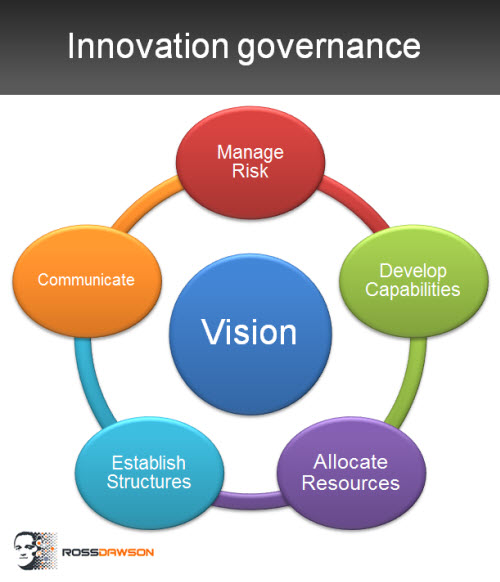6 key elements in effective innovation governance
Earlier this week I ran a two-day workshop in Bali for the Malaysian Directors Academy on The Innovation Zone: Unleashing The Mindset.
I ran the same program in Phuket last October for another group of directors of large Malaysian companies, with the feedback from that session prompting the Malaysian Directors Academy to ask me to run the workshop again.
The topic of “innovation mindset” is an excellent one for company directors, as that must be the starting place for successful innovation initiatives.
Innovation and transformation at the board level is by far the dominant theme of my work at the moment. I am hoping to share more content on this topic in coming months as I get a chance.
In a broader sense, what I call governance for transformation has been a key theme of my work for some years. Governance is essential in uncertain and uncharted spaces, yet if that governance doesn’t enable organizational transformation, it is fundamentally broken and value-destroying.
In a more specific way, innovation governance is critical to enable any innovation initiatives.
Below is a simplified framework of the key elements of innovation governance. Below I will provide some brief notes. I will develop these ideas in future posts.

The six key elements of innovation governance are:
Vision
At the center of innovation governance is clarity on the role of innovation in the organization’s future success, including prioritized objectives for innovation.
Manage risk
Since innovation necessarily requires risk, the starting point must be discussion and clarification of organizational risk tolerance relative to potential rewards. This must be commensurate with the company’s ambition, and assess the risk of not innovating on a par to the risk of innovating.
Develop capabilities
Given that innovation capabilities will be central to all organizations’ future success, developing these capabilities must be an ongoing strategic priority for the board and executive team. This impacts who should be on the executive team, talent strategy, technology architecture, and many other critical issues.
Allocate resources
Effective innovation requires resources, yet traditional financial measures are largely inappropriate for assessing truly innovative initiatives. Portfolio management is a central innovation capability, in managing diversity of initiatives’ domain, size, timeframe, and scope. Boards will only be formally involved in specific large-scale investment decisions, yet they can set useful frames for decision-making across the innovation space.
Establish structures
Innovation structures and processes include specific issues such as platforms and processes. However they can also include macro-level organizational structure issues, including function definition, decentralization, the formalization of innovation functions, and the nature of value-creation in external relationships.
Communicate
Innovation governance has value largely in how well it is communicated to involved parties. High-level innovation governance frameworks must be communicated to everyone in the organization so they can readily understand the overall vision and in particular risk tolerance, which should inform day-by-day behaviors. Effective innovation governance will also mandate broad transparency and communication about innovation initiatives.
More on this later. I’d love to hear any lessons learned from effective (or ineffective) innovation governance in organizations that you have worked in or seen.
